How Long Does A Henna Tattoo Last? 8 Tips For Longer Wear
Uncover the process of a temporary henna tattoo and get tips on how to make it last longer.
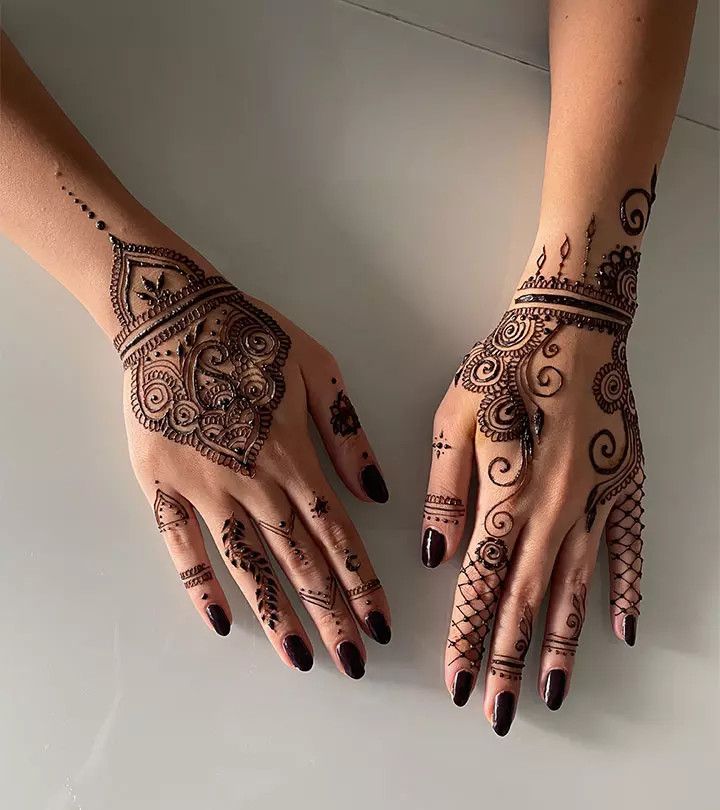
Image: Shutterstock
We have the perfect solution if you want a tattoo so badly but have not decided on a design that you want to take to the grave or if you are not ready for the lifelong commitment yet: Henna! However, people who consider henna for a temporary tattoo often find themselves asking the question, ‘How long does a henna tattoo last?’
Henna is a part of the cultural practices in many Asian and Middle Eastern countries. It is also used in auspicious occasions like weddings to adorn the hands or feet of the bride and groom. Henna is becoming increasingly popular worldwide for those who want a tattoo but wish to avoid the pain or cannot have a permanent tattoo due to personal or professional reasons, as it does not last as long. But exactly how long does a henna tattoo last? Dive into the article to find out the answer and much more!
In This Article
How Long Does A Henna Tattoo Last?
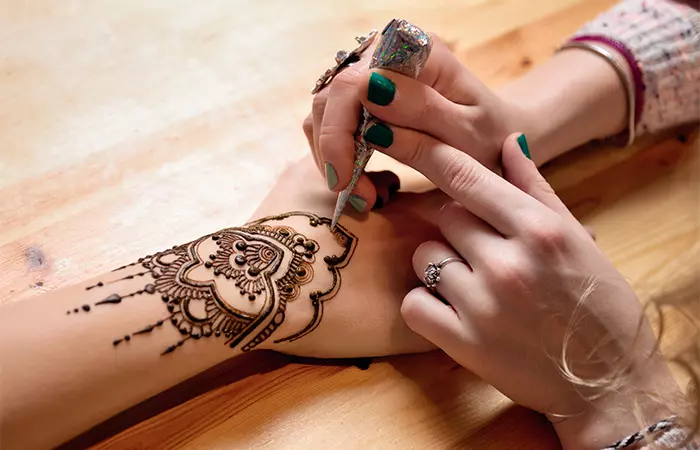
The answer to this question, “How long do henna tattoos last?” depends on several factors, such as the placement of the tattoo, the skin regeneration rate of the individual, and even the daily routine of the person. However, generally, it is said that a henna tattoo lasts between 1 and 3 weeks.
Henna tattoos on parts that do not experience much movement or friction and are not washed often can even last for a month. It also depends on how you take care of it. If you wash the area too often or use harsh soaps or detergents, it may come off sooner while keeping it moisturized may make it last longer.

 Fun Fact
Fun FactKey Takeaways
- Henna is a natural dye made from a plant called Lawsonia inermis and it lasts on the skin for 1-3 weeks.
- Henna contains a molecule called lawsone that binds itself to the keratin protein in the skin, which makes it last long.
- Placing the tattoo on thicker skin, avoiding harsh chemicals and water, and keeping the skin moisturized are a few ways to increase the tattoo duration.
How Does Henna Work?
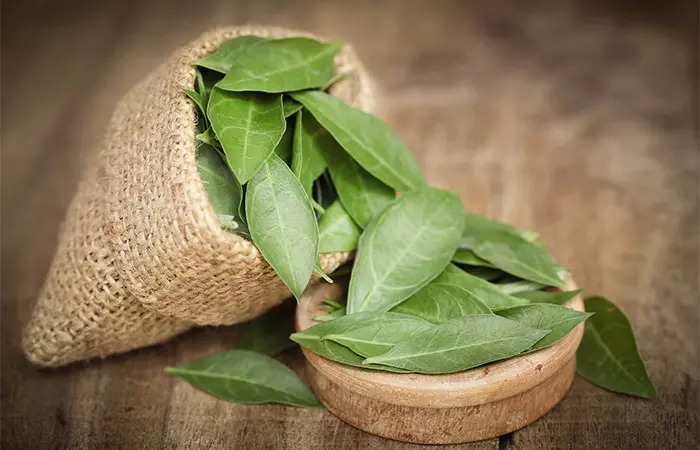
Henna is made from the leaves of a tropical plant native to tropical regions of Northern Asia and Africa called Lawsonia inermis. The leaves of this plant contain a lawsone molecule, also known as hennotannic acid, which is a strong staining pigment that has been used by humans for centuries in hair and skin dyes. The molecule actually reacts with the skin to bind itself to the keratin protein in the skin cells. This reaction makes the dye adhere to the skin as long as the skin cells remain intact and do not shed.
Henna comes in a range of colors that go from burnt orange to dark red. Within the first 48 hours of application, that stain oxidizes to get darker with time, increasing the durability of the stain and making it last longer than most temporary skin colorants.
 Did You Know
Did You KnowWhile henna tattoo is a temporary skin dye, there are several techniques to adapt during and after henna tattooing to increase its durability. Move on to the next section for more on this.
Tips To Make Henna Tattoos Last Longer
If you cannot get over your pretty henna design and want to keep it as long as possible, we got you. Here are some ways to make your henna body art last longer.
1. Consider The Placement
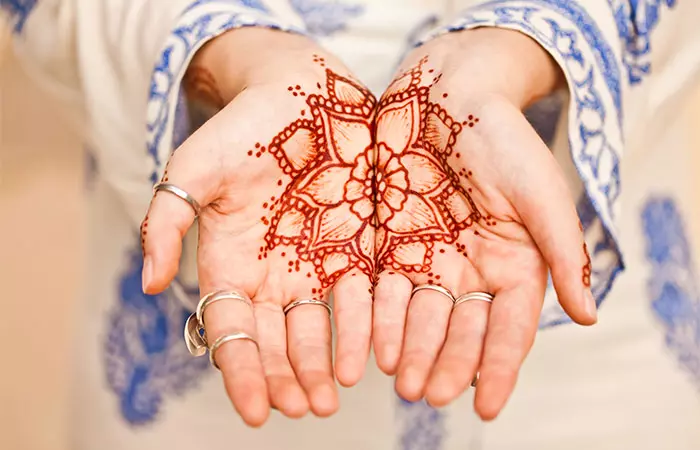
Body parts that have thicker skin will retain the henna design longer than those with thin skin. You can get long-lasting tattoos with henna on the soles of your feet, palm of your hand, or stomach.
Ann George, a henna tattoo artist and blogger, shares her experience of making henna tattoos on herself and others. She mentions that the longer you keep it, the darker henna gets. She also adds, “Those photos you see of deep red henna stains are usually done on the palm of the hand. This will always be the best place to put your henna tattoo (i).”
2. Maintain The Moisture
Keeping the henna paste moist will help it stay on the skin longer, leading to a deeper stain that does not easily fade. Apply a mixture of sugar, water, and drops of lemon juice to your henna when it is semi-dry, and then leave it to rest and dry. This is also a great tip for how to make mehendi darker.
3. Let It Rest
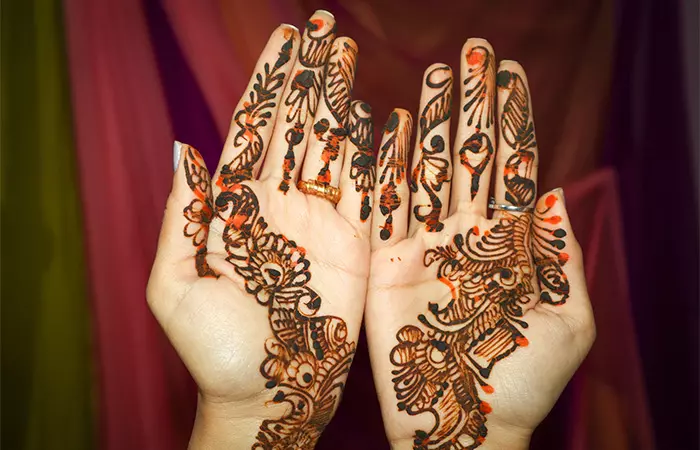
We all want to have a peek at how the color turns up during the drying process of the henna dye and after it has just dried. A little patience during this time can help your beautiful henna tattoo achieve a darker and deeper color. Let it rest for at least 1 hour or overnight for best results.
4. Turn The Heat Up
The warmth provided to the henna tattoo during the first 48 hours helps lawsone molecules bind to the keratin protein in the skin. Balance the heat to keep the tattoo warm, not hot as too much warmth can cause sweating.
5. Avoid Washing The Tattoo Often
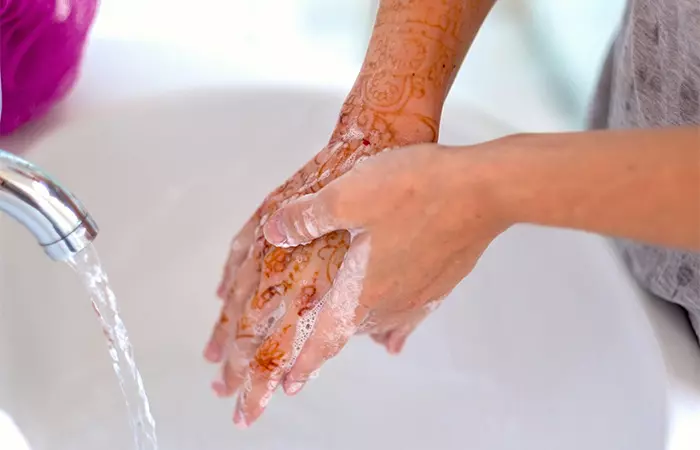
Washing the area with the henna tattoo can result in washing off the stain sooner than usual. Use a low-acidity soap to clean the area with soft, light hands to preserve the stain for a longer duration.
6. Skip Exfoliation
When you exfoliate your skin just before applying a henna tattoo, the upper layer of the skin gets removed. This would mean that the pigment has fewer layers of skin to bind to and would fade away soon. Exfoliate at least 2-3 days before application.
7. Apply The Tattoo To Clean Skin
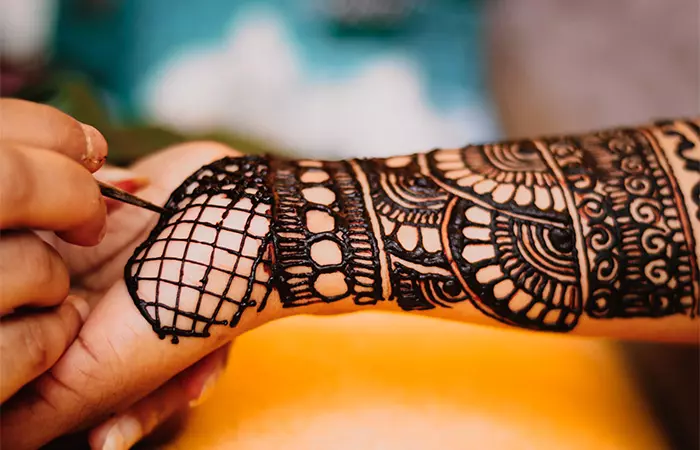
Clean and dry the area intended for henna tattooing before application to wash off oils, lotion, or any products on the skin surface so that the henna dye holds on to the skin better
8. Minimize Friction
Friction on the tattooed surface can result in fading of the henna more quickly than usual. Wear loose and comfortable clothing to avoid unnecessary rubbing to protect your henna design.
Henna tattoos are growing increasingly popular today, especially as part of the desi or bohemian aesthetic. But have you ever wondered about their origins? Head over to the next section to know more about the roots of this loved art.
Cultural Significance Of Henna
Henna has been an important part of many cultures for over 5,000 years, especially in India, Pakistan, Africa, and the Middle East. It was initially used for its cooling properties to help people cope with the heat and for medicinal purposes like treating headaches, burns, and stomach problems. But over time, it became more popular as a decorative art.
Henna is most commonly applied during weddings and festivals. In some cultures like India, the color and design of the henna are thought to symbolize the strength of love and the prosperity of a marriage. The beautiful patterns are believed to bring good health, happiness, and blessings to the bride.
Today, henna is used for all sorts of occasions, from birthdays to cultural festivals, and continues to be a symbol of joy, beauty, and tradition.
Temporary henna tattoos are getting increasingly popular due to its easy application and removal. Henna tattoos are preferred by people who like the idea of tattoos but do not want permanent tattoos yet due to lack of commitment or any other reason as they last for only 1-3 weeks. These are also best for people who fear the pain that comes with permanent tattoos. A pigment present in henna leaves called lawsone helps the stain bind to the skin and makes it last longer than other temporary tattoos. You can increase the durability of henna tattoos by applying it on thick skin, keeping it on for longer, and maintaining the moisture of your skin.
Frequently Asked Questions
How to remove a henna tattoo?
Henna tattoos naturally fade over time, but if you want to speed up the process, gently exfoliate the area with a scrub or apply a mixture of lemon juice and sugar to lift the stain. Avoid using harsh chemicals as they can irritate your skin.
Is henna tattoo safe?
Henna is an organic dye made from the leaves of a plant called Lawsonia inermis, which is considered to be safe even for sensitive skin unless you are specifically allergic to it.
Why is it not recommended to use black henna?
Black henna often contains p-phenylenediamine (PPD) aka coal tar instead of organic henna leaves, which is harmful and also considered a contact allergen (1).
Can I swim with a henna tattoo?
Although it is safe to swim with a henna tattoo, it is recommended to avoid chemicals like chlorine present in pool water if you want to keep your tattoo for a longer duration. This is because chlorine reacts with henna tattoos and fades them or makes them greenish.
Does the color of the henna tattoo change over time?
Yes, during the first 48 hours, the henna tattoo gets darker due to oxidation and after a few days, it gets lighter as it fades.
Illustration: How Long Does A Henna Tattoo Last?

Image: Dall·E/StyleCraze Design Team
If you enjoy henna tattoos, why not turn it into a game? Invite your friends over for a sleepover and take turns doing each other’s tattoos. Check out the video below for some inspiration to have some gorgeous henna tattoo designs!
Personal Experience: Source
StyleCraze's articles are interwoven with authentic personal narratives that provide depth and resonance to our content. Below are the sources of the personal accounts referenced in this article.
(i) I don’t see my henna tattoo! There is nothing there!! Don’t panic.https://hennatattoo.blogspot.com/2011/06/i-dont-see-my-henna-tattoo-there-is.html
References
Articles on StyleCraze are backed by verified information from peer-reviewed and academic research papers, reputed organizations, research institutions, and medical associations to ensure accuracy and relevance. Read our editorial policy to learn more.
- Side-effects of henna and semi-permanent ‘black henna’ tattoos: a full review
https://pubmed.ncbi.nlm.nih.gov/23782354/
Henna Tattoo Lifespan: 1–3 Weeks of Beautiful Color
Watch now to discover exactly how long henna tattoos last and expert tips to extend their lifespan. Learn why placement, moisture, and gentle care keep designs vibrant longer.
Read full bio of Ali Aman
Read full bio of Gazala Firdos Ansari
Read full bio of Shatabdi Bhattacharya
Read full bio of Shreya Mukherjee







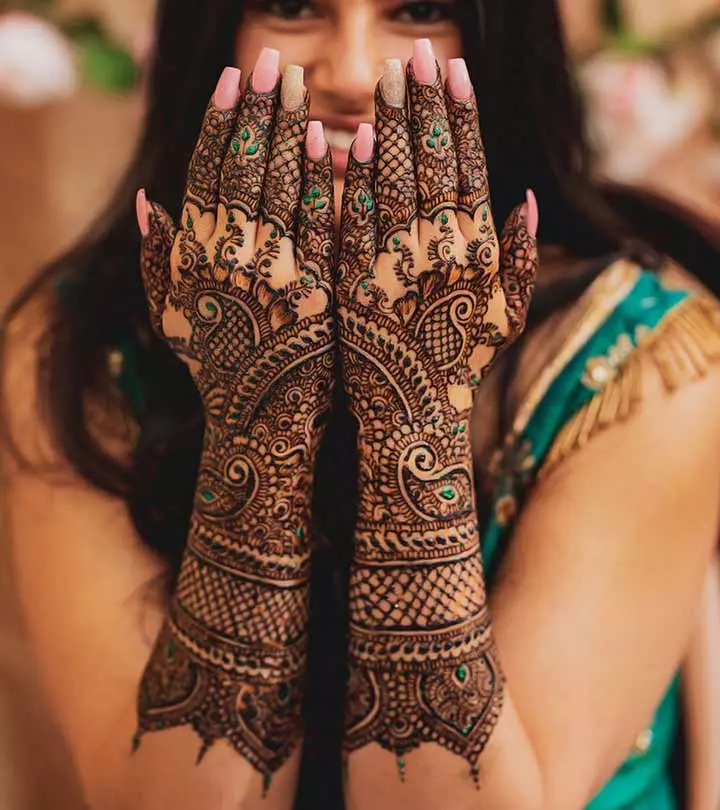


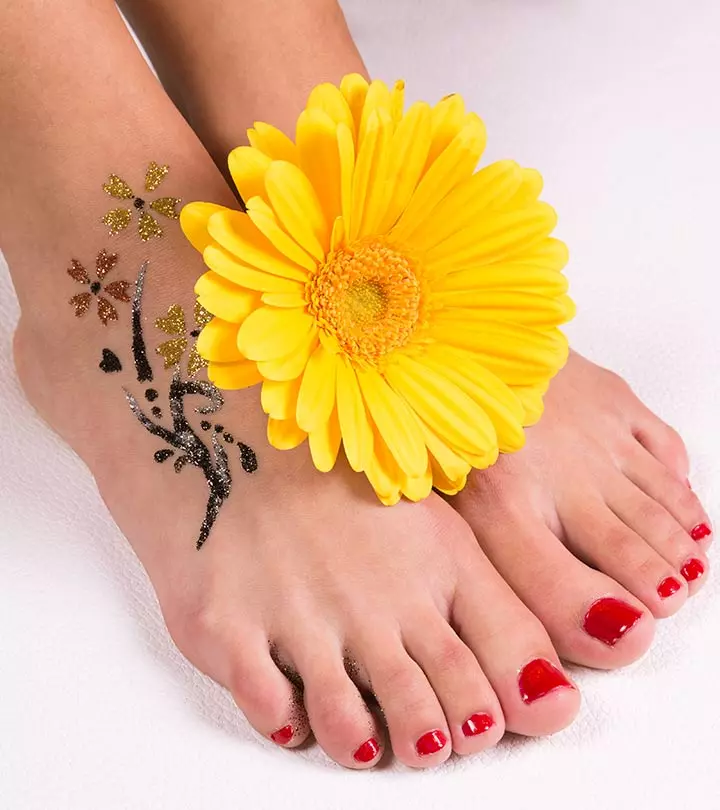
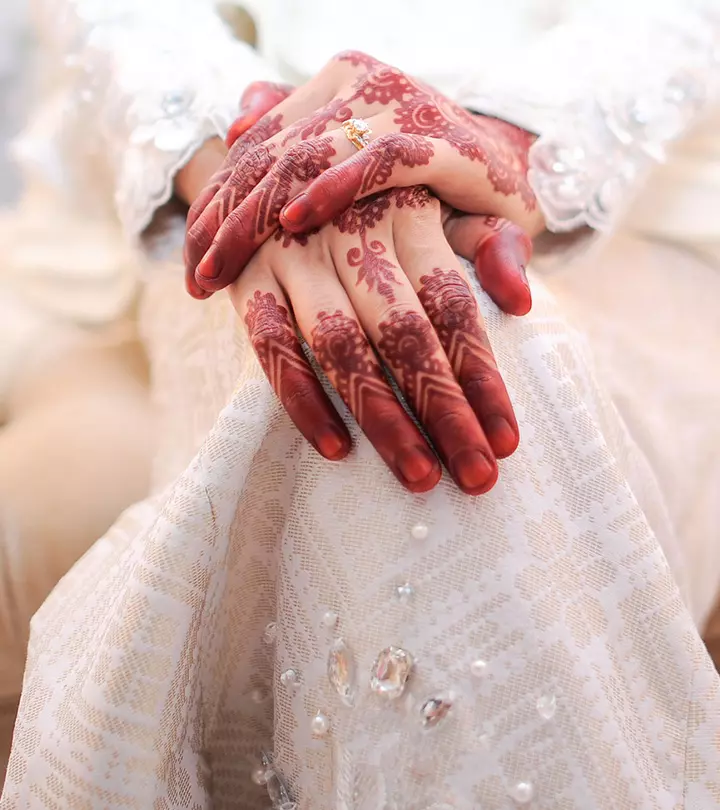
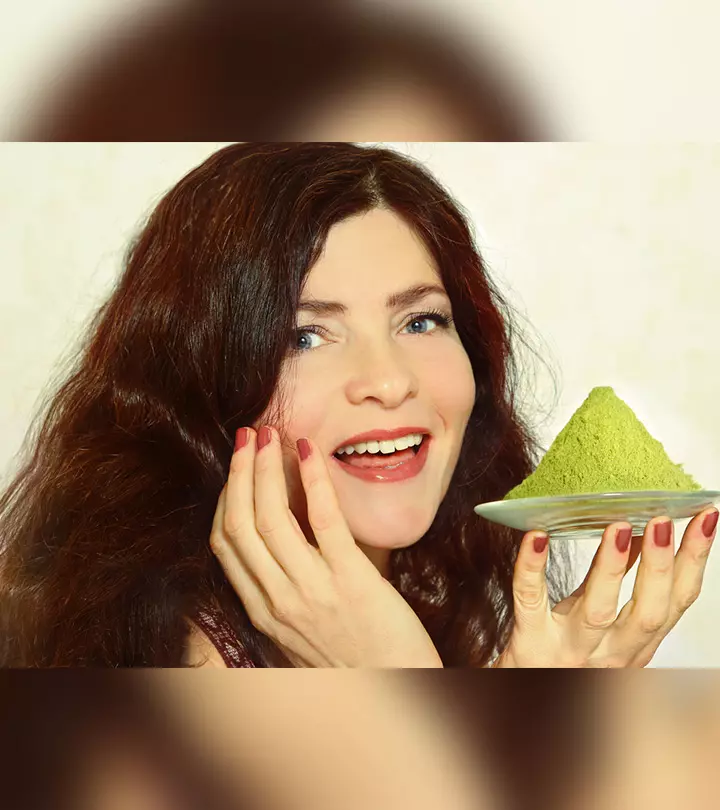













Community Experiences
Join the conversation and become a part of our empowering community! Share your stories, experiences, and insights to connect with other beauty, lifestyle, and health enthusiasts.